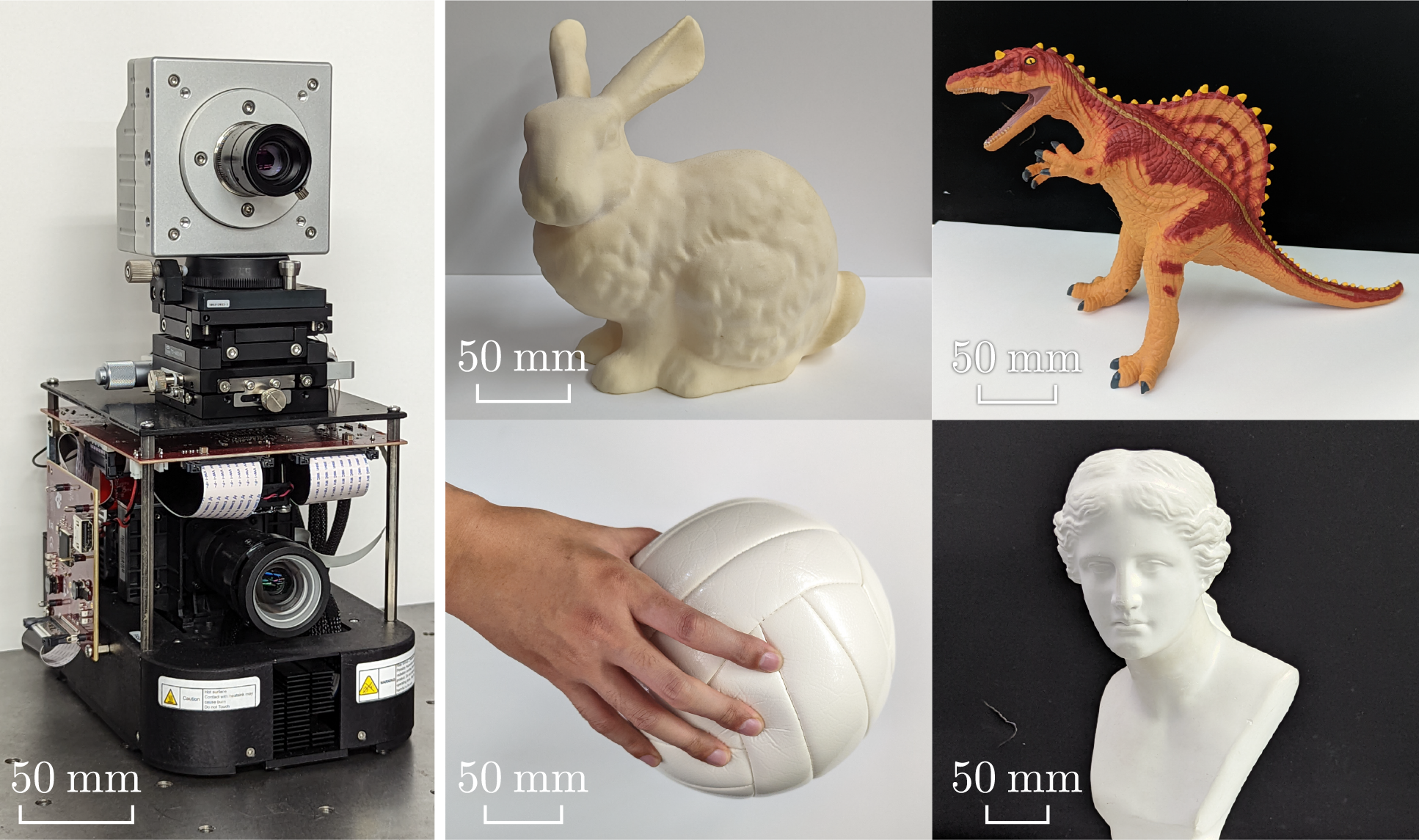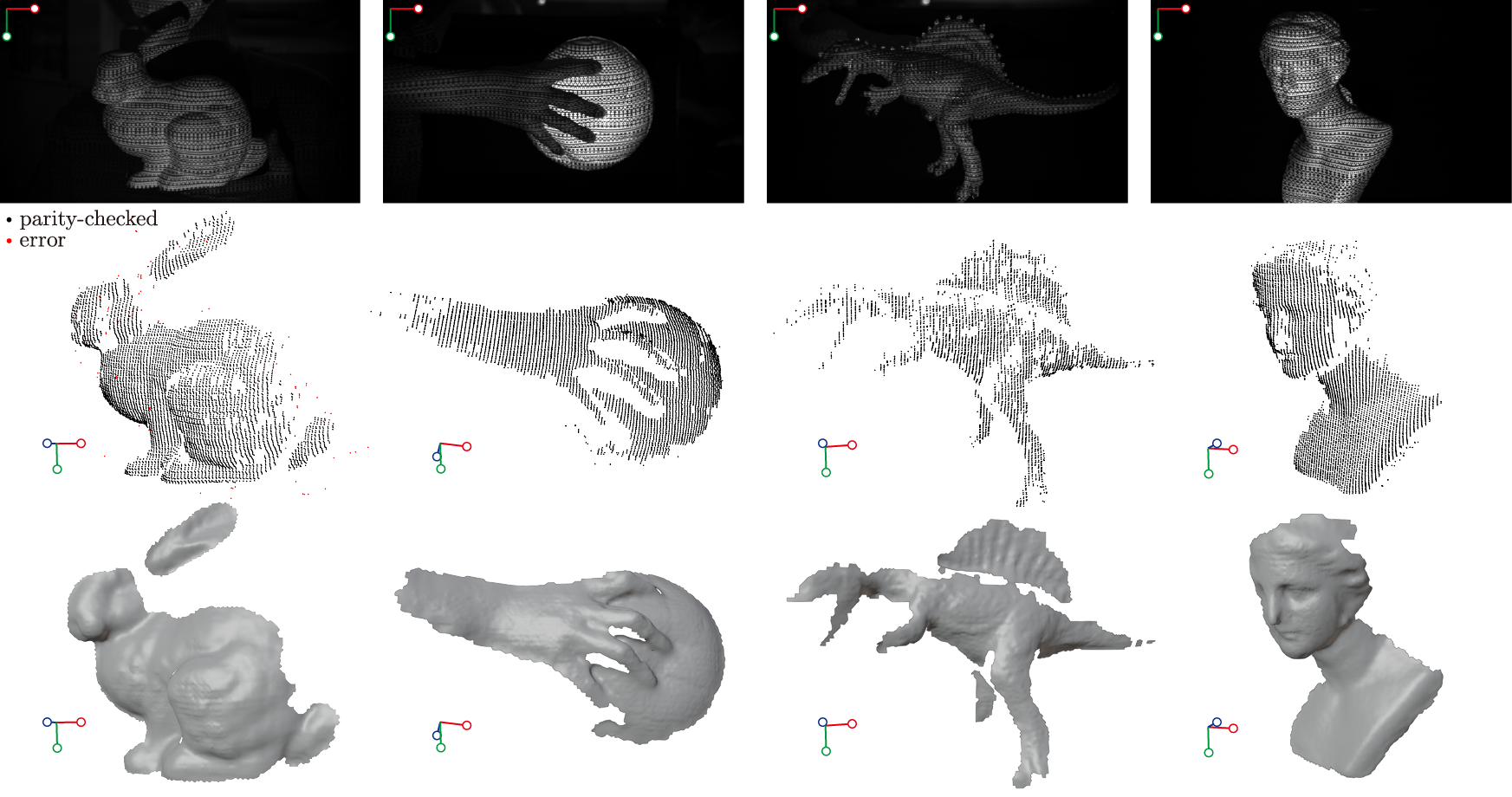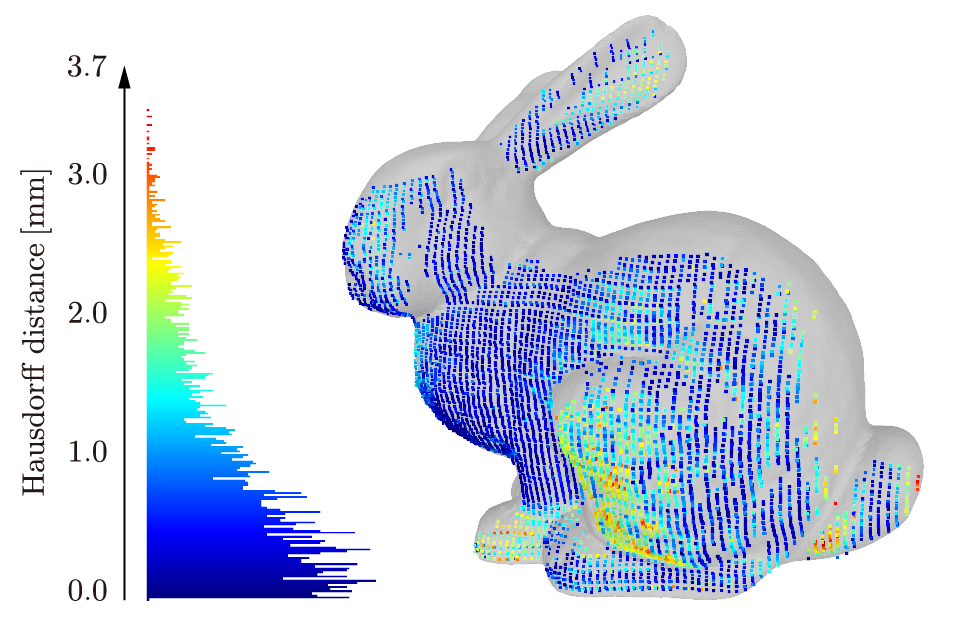High-speed and Low-latency 3D Sensing with a Parallel-bus Pattern
Summary
This study proposes a new one-shot structured light method using a parallel-bus pattern for high-speed, low-latency 3D shape measurement of dynamic scenes. 3D shape measurement is a fundamental technology used in a wide range of fields, and next-generation methods that simultaneously achieve high speed, high resolution, and high accuracy are expected. The conventional method using structured light patterns and high-speed image processing technology, which has been developed in this laboratory, achieves a high speed of 1,000 fps. However, the low information density of the pattern has resulted in low measurement resolution and, accordingly, low accuracy.
In this study, we assume physically stereo-rectified projector-camera systemn, and by incorporating the structure of parallel bus communication into the pattern, we constructed a framework for binary spatial codes that can be decoded at high speed on general computer architectures. Furthermore, by encoding the embedded information using the De Bruijn torus as shown in Fig. 1, we devised a parallel-bus pattern that maximizes the information density.
Experimental results show that the proposed method can acquire 26713 points with an average accuracy of 0.838mm in 0.336ms computation time (Fig. 2-4). This performance outperforms conventional methods in terms of speed, resolution, and accuracy, and its compact configuration is expected to lead to further development.
 |
 |
 |
 |
References
- Leo Miyashita, Satoshi Tabata, Masatoshi Ishikawa: High-speed and Low-latency 3D Sensing with a Parallel-bus Pattern, International Conference on 3D Vision (3DV2022), Proceedings, pp. 291-300, Prague, Czechia, 12-15 Sep. (2022)



